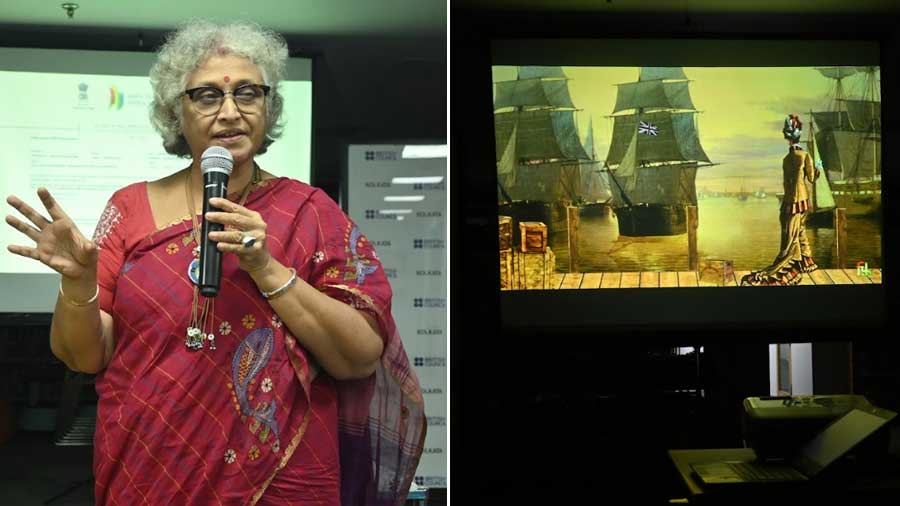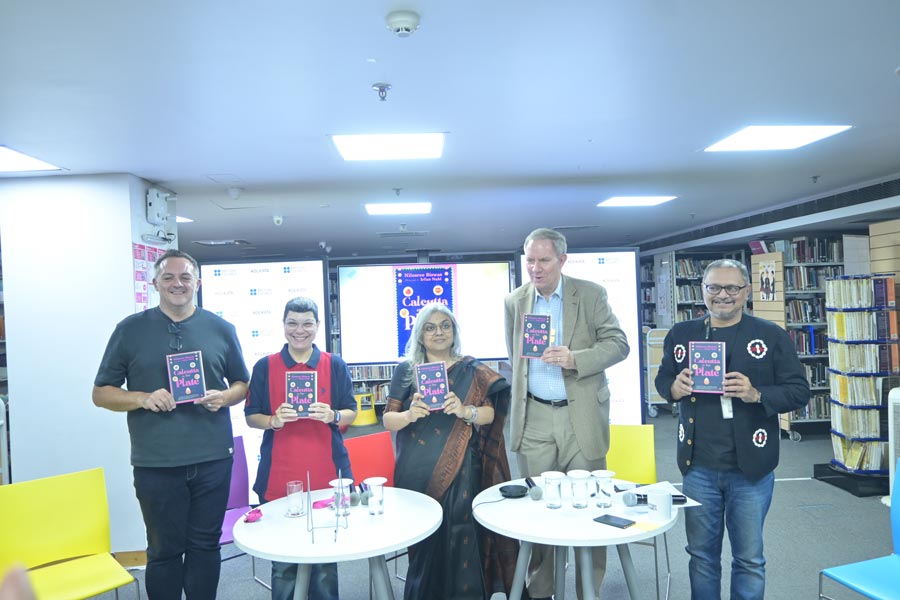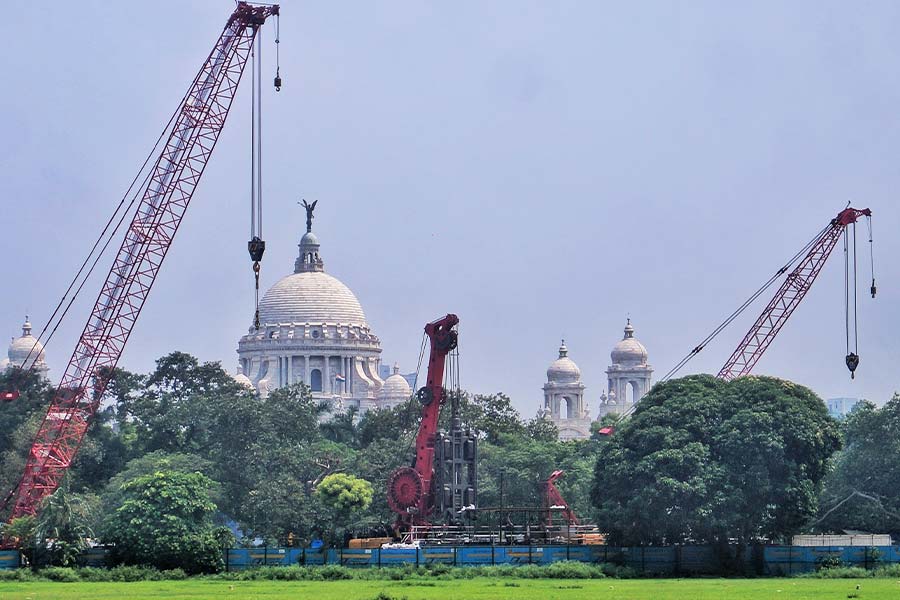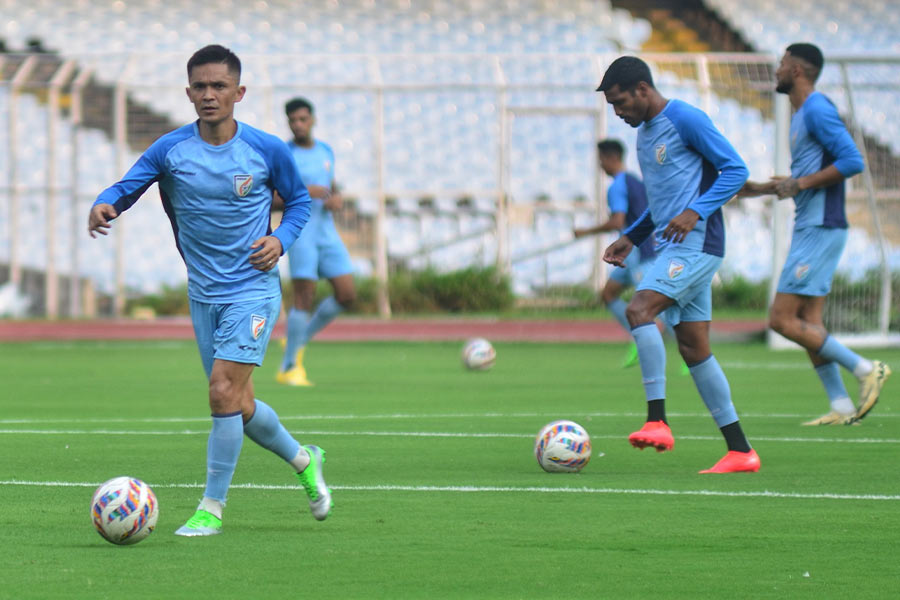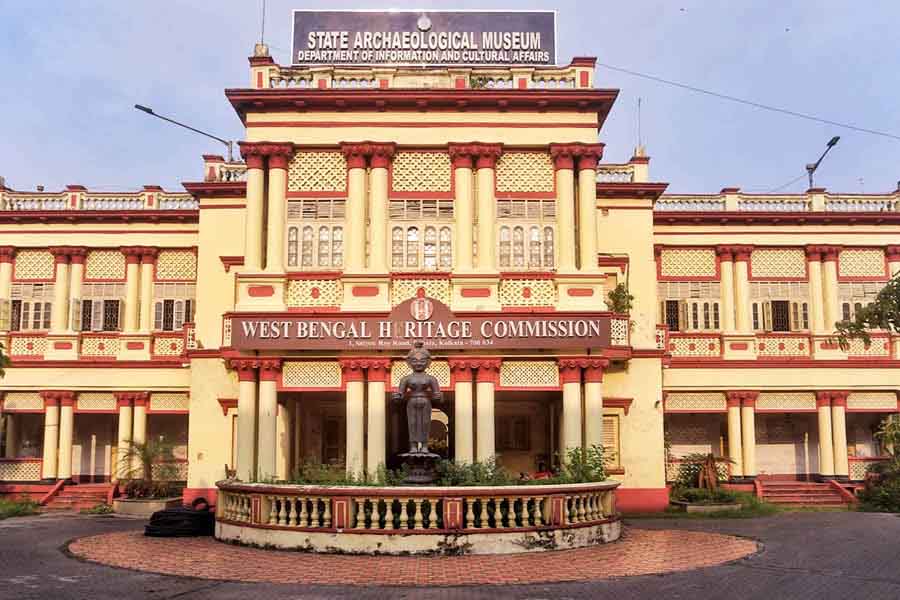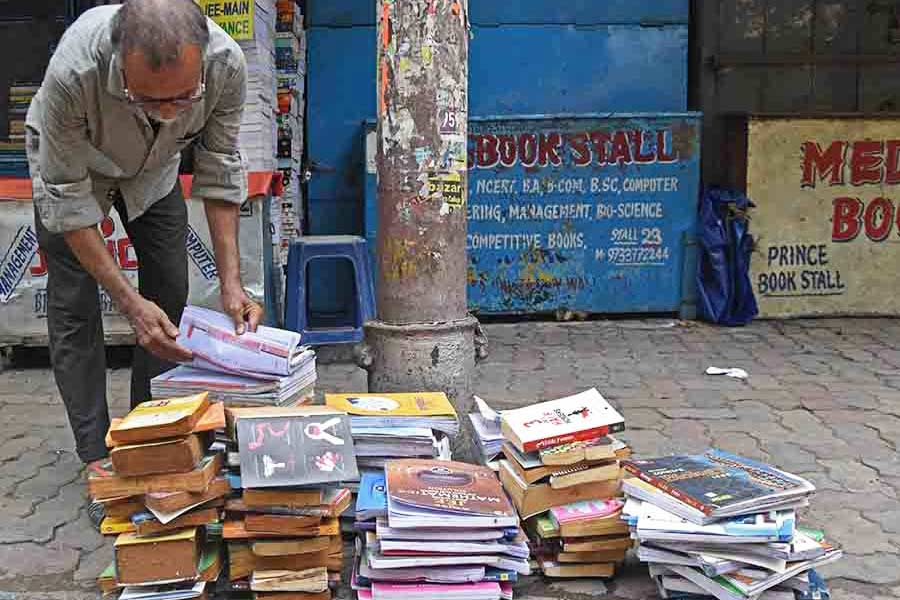“An antique book, a forgotten instrument and timeless music,” reads the trailer of Subha Das Mollick’s latest documentary, City Symphonies. On September 15, right as the clock struck six in the evening, the British Council Library on Camac Street was “shipped” to a forgotten era. The era of the letter-block-printed Bengal Gazette that took British offices by storm every Saturday. The era of white bolts of lightning striking BBD Bagh’s St. Anne Church and paving the way for the Writers’ Buildings to be constructed on its premises a few years into the future. But, most importantly, the era of a strange, yet delightful, entwinement of wits of memsahibs and nautch girls, whose ultimate amalgamation birthed the classical music form Hindustani Air.
Produced by Films Division, Mollick’s City Symphonies (watch the trailer here) narrates the tale of the harpsichord (a keyboard musical instrument), The Oriental Miscellany and the informal friendships that were fostered between English wives and Indian courtesans. In the late 18th century, long before the Bengal Renaissance, nautch parties (dancing parties graced by courtesans) were the talk of the ‘White Town’. East India Company (EIC) officers and their wives were regular visitors to these fiestas.
A fusion of the Oriental and the Occidental

Scenes from ‘City Symphonies’
In 1777, Kolkata witnessed the arrival of Sophia and Richard Plowden. An amateur musician herself, Sophia was left bedazzled by the fascinating nautch songs. Soon, she commissioned her instrument to be shipped to the ports of Kolkata. However, it was no organ or classic piano, but the now-forgotten harpsichord. Quite prevalent in European provinces, the harpsichord, which looks like a double-decker piano, made its way to Kolkata’s EIC residences. And the rest is history.
Dressed in nautch attire, Sophia began spending her evenings in the company of these girls. She invited singers, dancers and musicians home and attempted to recreate the tunes of Oriental instruments on her harpsichord. Owing to the lack of written records, she etched the tunes in Western staff notation, the only musical language she knew. This novel composition that brought together the Oriental and the Occidental, arguably for the very first time, came to be known as Hindustani Air. Little did Plowden know she would be paving the path for William Hamilton Bard’s 1789 book, The Oriental Miscellany (a compilation of Indian classical adapted for the harpsichord in Western staff notation) and, much later, Mollick’s City Symphonies.
The versatile and thoroughly-researched documentary hosts serene aerial shots of Kolkata’s iconography, riveting musical scores, interviews of music veterans and academicians from across the globe, researchers’ insights into the rise and subsequent decline of the harpsichord owing to the humidity of the tropics, the typical Indian jugaad of repairmen who mended these instruments, and the parallel universe of 18th-century Kolkata where Shyama sangeet, keertan and tuppahs painted the ‘Black Town’ red.
The illustrations pique interest and make the film stand out
According to Mollick, the greatest contribution to the film came from two “present-day memsahibs”, June Chapman and Katherine Butler Schofield. Chapman, a professor at the Royal College of Music, London, not only played one of the very last harpsichords in existence for the film but also lent us a peek into an original copy of The Oriental Miscellany at the university library. Today, not a single copy of this book exists in India. Schofield, Head of the Department of Music at King’s College, London, mesmerised all with her Persian songs and unlocked the history of Hindustani Air through careful dissection of rare scriptures from the India of the 1780s. “When I submitted the proposal, I didn’t know I’d get their wholehearted support. They got so much material that my proposal had to be reworked,” stated Mollick, in appreciation.
The film delves into history not through short flashbacks, but through intricate motion-graphic illustrations that visualise the past. Whether it is an image of the harpsichord being descended at the port or the optical representations of what late-night kobi’r lorai (poet battles) at the Sovabazar Rajbari must have been like, the illustrations capture the very essence of the time and mood of a bygone era. Crafted by Sudipto Shankar Ray, a VFX artist and professor at SRFTI, the illustrations pique interest and make the film stand out.
The cross-cultural hybridisation of music is imminent

Pramita Mallick, Anjum Katyal, Sarvani Gooptu and Mollick as part of the panel discussion
Amit PramanikA panel discussion followed the screening of the film. It was moderated by Anjum Katyal, who was in conversation with Mollick, Pramita Mallick, singer and academician; and Sarvani Gooptu, professor at the Netaji Institute for Asian Studies, Kolkata. Sanitisation of folk music was presented as a point of discussion. While Bard’s book recorded the Hindustani Air, more native forms that escaped the radar of Englishmen were wiped out by the bhodrolok’s sanitisation, argued Gooptu.
Notably, all the panellists explained about how the cross-cultural hybridisation of music is imminent. They spoke of the influence of Irish and Scottish melodies in Rabindrasangeet and Raja Ram Mohan Roy’s hymns, which were direct translations of Christian hymns.There was also the adoption of Western styles into the classical music of 19th-century Kolkata, which the second part of City Symphonies, Nabajagaroner Gaan (Music of Rejuvenation) deals with. Mollick has submitted an entry of Music of Rejuvenation to the Indian premiere category of the Kolkata International Film Festival.
“While doing my academic research work (Mollick is also a media professor), I came across the term Hindustani Air on the internet. That triggered my curiosity… the interaction between two groups of women who are culturally, geographically and linguistically so different got me interested,” said Mollick on what motivated her to pursue this topic.
Over a year of research, a cross-nation shoot in the middle of a pandemic that forced the director to remote-control shots from her Golf Green residence, and lucid chronological storytelling owing to Mollick’s years of teaching make City Symphonies a must-watch, both in conception and execution.
Audience Speak
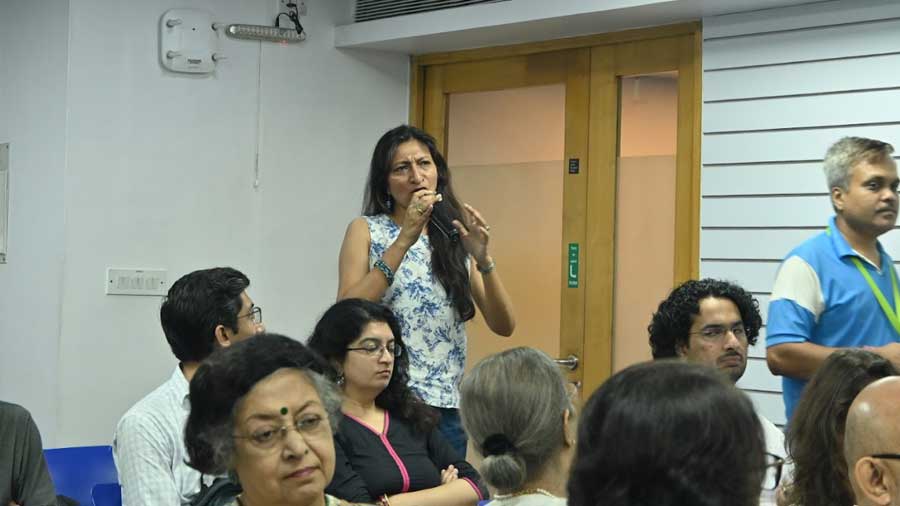
Supriya Newar
“Unearthing an inspiring niche and creating a full-length documentary by tracing those times is what transformed City Symphonies from a mere musical documentary into a cultural one.”
— Supriya Newar, author

Debanjan Chakrabarti
“This film epitomised the living bridge between India and England that the British Council strives to achieve. As we say, music knows no barriers. This was a wonderful example of how barriers and language were transcended back in the day as they continue to do now.”
—Debanjan Chakrabarti, Director, British Council, East and Northeast India

Subhadeep Sengupta
“My sole intention was to be very careful about the fidelity of the sound design to ensure the audience hears what the harpsichord truly sounds like. In recent years, there have hardly been any serious documentaries regarding music, especially in the East. But Subhadi’s approach was serious. The subject matter was highlighted instead of the glitz and glamour that most pieces focus on nowadays.”
—Subhadeep Sengupta, sound designer and mixer for City Symphonies and professor at St. Xavier’s College, Kolkata

Sreenath Mallela
“The film enlightens us about the sociological perspective of the evolution of music in Bengal and how different strata of society had different versions of music and how there was an osmosis between them.”
—Sreenath Mallela, manager, RBL Bank


